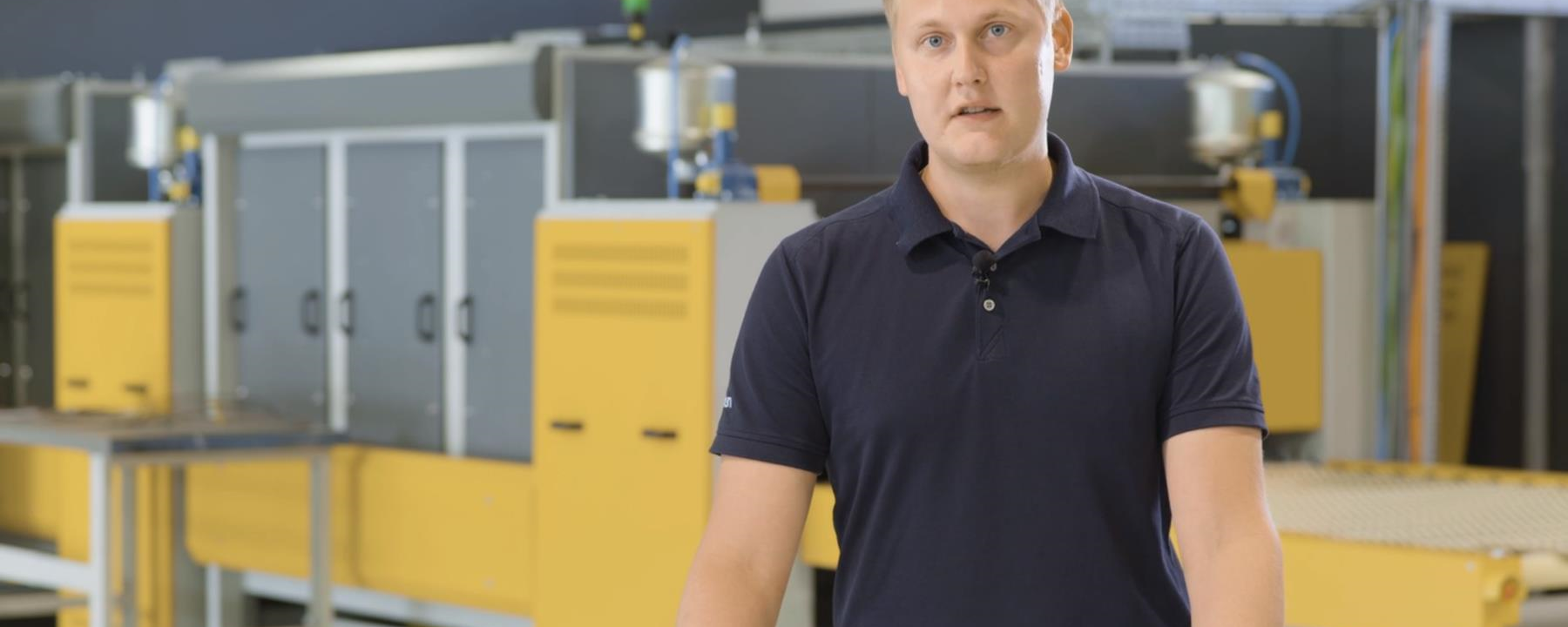
This week, we’re dealing with the following question: Why is SentryGlas® different to laminate than normal PVB?
That’s an excellent question! It really is true that SentryGlas® laminating SentryGlas is different when compared to standard PVB in many aspects. But if we first think of what SentryGlas® has been designed for, it is to give structural strength to the laminate to add highly increased safety and security performance
The difference between SentryGlas® and standard PVB can be instantly seen – even when you’re comparing a piece of SentryGlas® and a piece of PVB at room temperature. SentryGlas® is a much stiffer material and also a bit more slippery material than PVB. And this can cause potential issues throughout the process that you need to consider when producing SentryGlas® laminates. So let’s look into them starting from the assembly room and moving to the heating, pre-pressing and autoclaving.
First, let’s look into the assembly room and what kind of challenges SentryGlas® brings there to the table. First of all, since SentryGlas® is more slippery than normal PVB, to which people are mostly used to, it is more common to see the top glass sliding on the foil, especially with thin glass, than you would see with PVB. It means that it is really important to pay attention to having the glasses completely aligned and not to move the glass, for example, during the trimming process. Otherwise, it is quite typical to cause misalignment by slightly moving the top glass or pulling the edge of the SentryGlas® interlayer during the trimming.
The second thing is that the trimming with SentryGlas® is a bit more difficult than with PVB. It is harder to make a straight cut through the material, and if you are trying to do that, it can cause an issue. That is why with SentryGlas®, you can just make a pre-cut, and then it is easier to tear off the remaining material away. Alternatively, it’s also possible to order cut-to-size sheets which can allow avoid trimming completely.
These were the main things to take into account in the assembly room. The second part is the heating process.
While SentryGlas® is much stiffer in the room temperature than PVB, when you start heating it, it actually does get very soft very quickly. And even quicker than PVB does. This means that, compared to PVB, it is much easier to get the adhesion between SentryGlas® and the glass layer itself. This can lead to a situation of having trapped air in the trailing edge of the glass. The reason for this is that the trailing edge might have been overheated a bit and has closed before you were able to do de-airing. This, in turn, means that the operating window with SentryGlas® is narrower than with PVB which can be compensated for examply by lowering the heating temperature . So, it is very important to keep in mind that it is possible to run SentryGlas® with the same settings as PVB, but it might not be possible in certain areas of the PVB’s operating range, where higher temperatures still might be giving you the acceptable quality. When you are in the correct operating range in terms of furnace temperature and speed, you are able to run your production smoothly.
The third part is the autoclave. This is what sometimes causes issues for the companies that already have an autoclave and have been used to laminate PVB. It is quite easy to imagine that you can just load the SentryGlas® laminates to the autoclave and have the same capacity as you have with PVB, but that’s not always the case. The reason is that especially thick SentryGlas® laminates require a higher cooling rate during the glass processing cycle. So, if you are trying to process SentryGlas® with the same recipes and want to have the same amount of production as you have with PVB, way too often it not going to work. It is also important to take this into account when you are planning to purchase a new autoclave, so you could have it equipped with more cooling capability to achieve a decent capacity also with SentryGlas®.
These three processing steps are the main things that make SentryGlas® lamination a bit more demanding than with PVB. And this is something you need to take into account in your production.
It is also good to keep in mind that interlayers do evolve all the time. Therefore, it is good to discuss with the SentryGlas® interlayer manufacturer Kuraray (www.trosifol.com) what kind of recommendations they have. For example, SentryGlas® Xtra™, which has been out for a while, should be much easier to process from the autoclave perspective than standard SentryGlas® . Kuraray is also providing specific lamination guides for SentryGlas® and SentryGlas® Xtra™ for further information.
Für den Glastory-Newsletter anmelden
Wir beantworten Ihre Fragen zur Glasverarbeitung. Teilen Sie uns Ihre Herausforderungen mit und wir versprechen, unser Bestes zu tun, um Ihnen zu helfen.
Comments are closed.